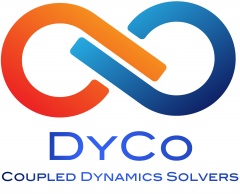| Line 7: | Line 7: | ||
It is based on a nodal approach strategy. | It is based on a nodal approach strategy. | ||
{| class="wikitable" | {| class="wikitable" | ||
| − | |[[File:Imuz.png| | + | |[[File:Imuz.png|350 px]] |
| − | |[[File:ImuzSerie.png| | + | |[[File:ImuzSerie.png|120 px]] |
| − | |[[File:Sfte.png| | + | |[[File:Sfte.png|250 px]] |
|} | |} | ||
Left: Elementary Cell, Coupled potentials (1 or N coupled potentials, also in series) <br/ > | Left: Elementary Cell, Coupled potentials (1 or N coupled potentials, also in series) <br/ > | ||
| Line 25: | Line 25: | ||
{| class="wikitable" | {| class="wikitable" | ||
|+ Sample 3D results including a non-homogeneous thermo-electric material with non-constant TE coefficients. | |+ Sample 3D results including a non-homogeneous thermo-electric material with non-constant TE coefficients. | ||
| − | |[[File:OUITemperature.png| | + | |[[File:OUITemperature.png|300 px]] |
| − | |[[File:OUIPotential.png| | + | |[[File:OUIPotential.png|340 px]] |
| − | |[[File:OUIElectricCurrent.png| | + | |[[File:OUIElectricCurrent.png|340 px]] |
|} | |} | ||
{| class="wikitable" | {| class="wikitable" | ||
|+ Sample 3D results for N-type junction with non-constant noisy TE coefficients. | |+ Sample 3D results for N-type junction with non-constant noisy TE coefficients. | ||
| − | |[[File:OUIEnergyDensity3D.png| | + | |[[File:OUIEnergyDensity3D.png|300 px]] |
| − | |[[File:OUIEntropyProduction.png| | + | |[[File:OUIEntropyProduction.png|220 px]] |
|} | |} | ||
In both cases, BC are Homogeneous Neumann and/or Non-Homogeneous Dirichlet. <br/ > | In both cases, BC are Homogeneous Neumann and/or Non-Homogeneous Dirichlet. <br/ > | ||
Revision as of 20:30, 1 April 2016
The DYCO Solvers suite
DYCO is a suite of solvers able to compute high accuracy solutions to
non-linear stock/flow potentials coupled equations.
It is based on a nodal approach strategy.
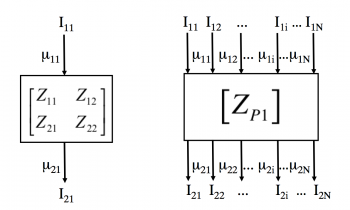
|
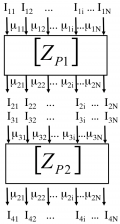
|
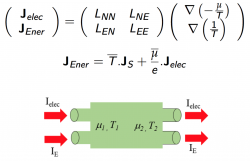
|
Left: Elementary Cell, Coupled potentials (1 or N coupled potentials, also in series)
Right: example in the thermo-electric context
Main features
- Nodal description of the considered network.
- Non linear Onsager type coupling between forces & fluxes.
- Steady, pseudo-unsteady & unsteady computations.
- Handle local to global scales (i.e. from coarse-grain to fine tuning).
- Possibly complex non-homogeneous structures and topologies.
- Possibly anisotropic, discontinuous coupling coefficients; potentials & time dependence can also be included.
- Allows for lighter/heavier computations and technological “optimization” !
Sample Results
We show below a short gallery of pictures obtained using the DYCO solver, in the thermo-electric context.
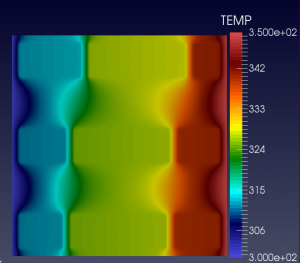
|
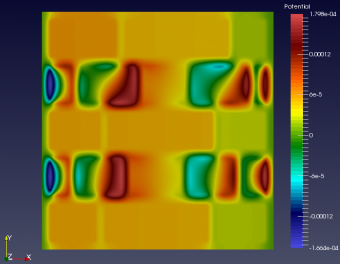
|
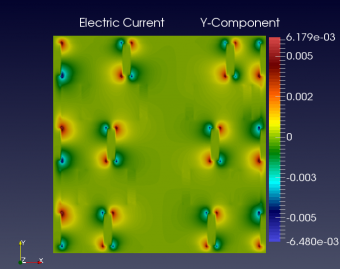
|
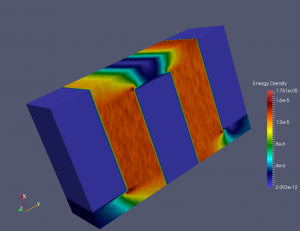
|
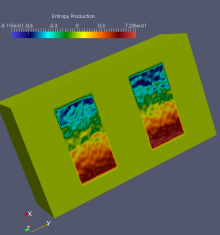
|
In both cases, BC are Homogeneous Neumann and/or Non-Homogeneous Dirichlet.
Each elementary cell is of the non-ideal (non-linear) type.
Sub-modules
More specific sub-modules of DYCO shall be devoted to the numerical solution of coupled stock/flow potentials
dynamics in the ecological economics and biological contexts.
Participants
Yves D'Angelo, Christophe Goupil, Eric Herbert, Xanthippi Zianni, Louise Méteir, Aurélie Louis-Napoléon.
